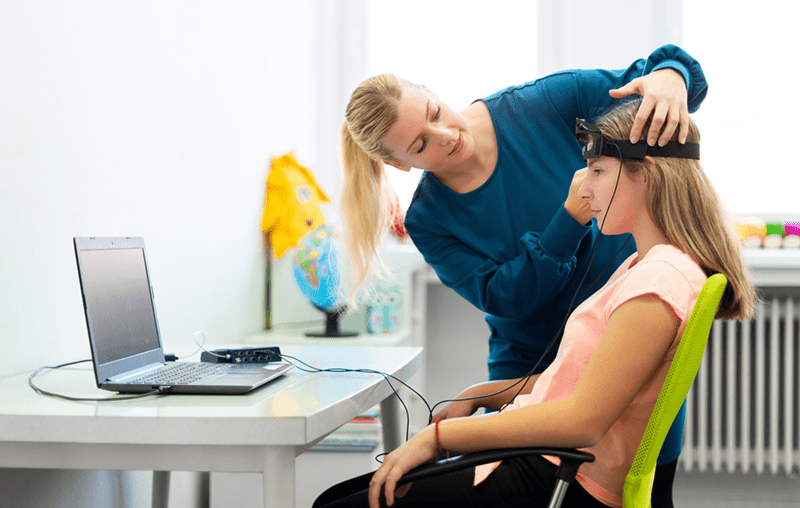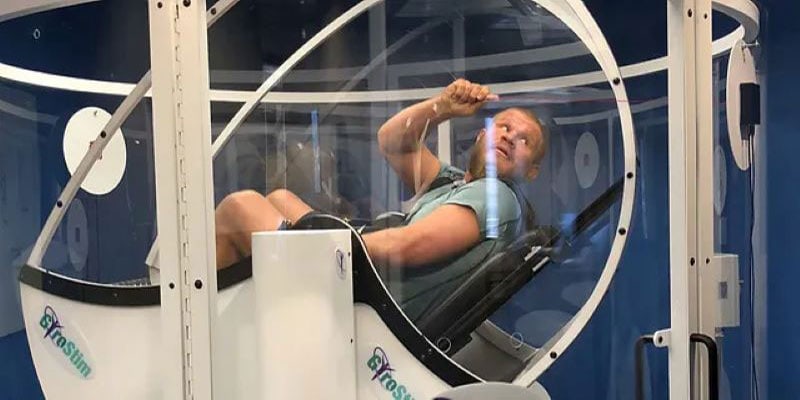Neurofeedback is a form of biofeedback in which practitioners can train an individual’s brain waves to approach a certain desired level. A patient’s care plan is created after an initial qEEG, or qualitative electroencephalogram, which measures and records your brain waves and then creates a report that details what waves are over or under active in which areas of your brain. This report alongside patient’s reported symptoms helps practitioners create training protocols that will be used during neurofeedback.
Understanding Neurofeedback Training
More specifically, neurofeedback is a form of operant conditioning, which is a method of learning that employs either rewards or punishments to the patient based on their presented behaviors. This can be done in a variety of ways, including sports games, light feedback, or perhaps the most popular – Netflix! Patients can come in for treatment and relax by watching their favorite show while technicians adjust the brightness of the screen and any additional auditory feedback during the training. Sessions range in length, and individuals slowly start to see results and changes in behavior over a long period of time.
Patient Uses for Neurofeedback
These training sessions can be used in a variety of ways – for seizure patients, those struggling with OCD or depressive tendencies and other mental health concerns, for people with autism spectrum disorders, and many other cases. These treatments can help individuals change their whole lifestyle, and several notable and prominent figures have tried it out themselves! Read on below to see different cases and testimonials that involve neurofeedback use:
- Claudia Sulewski and Finneas O’Connell – Sulewski is a popular YouTube and social media influencer, and her partner O’Connell is a musician and producer, the brother of the popular Billie Eilish. The pair have been doing neurofeedback sessions in southern California to take a look at what areas of their brains are more suppressed so that they can strengthen those areas such as emotional regulation and processing, critical thinking, creativity, organization, and focus. Strengthening weaker areas will not only help their business but their personal life as well.
- Kerri Walsh-Jennings and Misty May-Treanor – These two Olympic gold medalists used neurofeedback training in preparation for their win at the 2010 London Olympics.
- Italian Football Team – In another world sporting event, the 2004 Italian football team prepared for the tournament using NFB to train focus, concentration, and other tactics to help their overall strategy as a team. The team went on to win the World Cup Final that year against France.
- Chris Kaman – Former NBA star Chris Kaman previously played for the Los Angeles Clippers, New Orleans Hornets, Dallas Mavericks, Los Angeles Lakers, and the Portland Trail Blazers. As a child he was diagnosed with ADHD and took daily medication to manage that diagnosis, but as an adult he completed a qEEG brain mapping that made him realize he was misdiagnosed. He was then able to use NFB training to work on focus and decrease stress in his life resulting from his career.
- NASA Astronauts – Alan Pope, a researcher at the NASA Langley Research Center found ways to use NFB training to improve pilot attention and engagement to various tasks, increasing the overall efficiency of projects.
Even if you aren’t a world class athlete or an intergalactic astronaut, there’s still a lot you may have to learn from neurofeedback! Whether you would like to work on improving your mental health, training focus and attention, or just learning more about what’s going on inside your head, neurofeedback may be one of the ways for you to get the answers you’re looking for.



